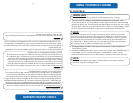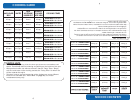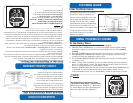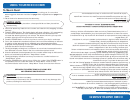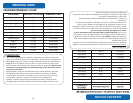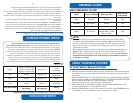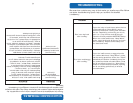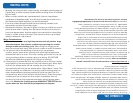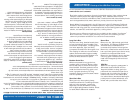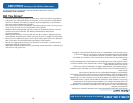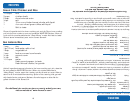
Safety Considerations:
1) Rice cookers cook at very high temperatures and will produce large
amounts of steam. Use extreme caution when opening rice cooker
during and after the cooking cycle. When lifting the hinged cover,
keep hands and face away from the rice cooker to avoid the steam.
2) If a recipe calls for the sauteing of butter or oil, use extreme
caution, as you would when cooking with other high-temperature
devices like a stove or oven. The inner cooking pot will be hot, so use
a long-handled plastic or wooden spoon for stirring. DO NOT USE
the short-handled serving spatula for this type of cooking.
3) It is important to remember that the cooking cycle of the rice cooker
is controlled by the temperature of the inner cooking pot. When liquid
boils off, the temperature will rise, causing the rice cooker to
automatically shift into the low temperature “Keep-Warm” mode. This
is fine for making rice dishes but if a recipe calls for making soups, or
other recipes where copious quantities of liquid are used, the rice
cooker will not shut off until all liquid is boiled away. Follow the recipe
carefully and do not leave the rice cooker unattended as it will
continue to cook at high temperatures when making soups, stews
and chilis. Monitor the cooking process. MANUALLY TURN OFF the rice
cooker when the time that the recipe stipulates has elapsed.
• Spraying the inner pot with a light coating of nonstick cooking spray is
a great way to make cleanup easier without adding flavor or calories
to your meal.
• When a recipe calls for salt, use kosher salt. It has no impurities or
additives and dissolves easily. You will need to use about one and a
half times more kosher salt than you would table salt.
• If the rice cooker shuts off before the food is totally cooked, add
more water and start the cooker again.
• Stocks and broths can be used in place of water to add flavor and im-
prove texture when cooking rice. Stocks and broths can be found in
your local supermarket. Another option is to use bouillon cubes (they
come in a wide variety of flavors). One cube and one cup of water
usually makes one cup of stock.
HELPFUL HINTS
14
Medidas de Seguridad:
1) Las arroceras cocinan a temperaturas muy altas y producen grandes
cantidades de vapor. Extreme sus precauciones cuando abra la olla, antes y
después del ciclo de cocimiento. Cuando abra la cubierta abisagrada,
mantenga la cara y manos lejos de la olla para evitar el vapor.
2) Si la receta de cocina le pide freír mantequilla o aceite, use tanta
precaución como si estuviese cocinando con aparatos de altas
temperaturas, como serian hornos o estufas. La charola interior esta
rá
c
aliente por lo que debe utilizar cucharas de plástico o madera bastante
largas para batir. NO USE las palitas cortas para este tipo de cocina.
3) Es importante recordar que el ciclo de cocimiento de la arrocera es
controlada por la temperatura de la olla interior. Cuando los líquidos
hierven las temperaturas se elevaran causando que la olla cambie
automáticamente a la modalidad de baja temperatura: “Keep-Warm.”
Esto está muy bien cuando cocinamos platillos de arroz, pe
ro s
i la receta
pide vapores o sopas donde se utilicen cantidades importantes de
líquidos, la olla no se va a apagar hasta que todos los líquidos se hayan
hervido. Siga la receta cuidadosamente y no deje la arrocera
desatendida, ya que de otra forma continuará cocinando a altas
temperaturas.Vigile el proceso de cocimiento y APAGUE MANUALMENTE la
arrocera cuando el tiempo de la receta haya transcurrido.
• El rociar la charola interior con una ligera capa de un atomizador para
cocinar (no pegajoso) es una excelente forma de hacer más rápida la
limpieza al tiempo que evita agregarle sabores o calorías a su comida.
• Cuando alguna receta de cocina le pida sal, utilice la sal “kosher,” ya que no
tiene impurezas o aditivos y se disuelve con facilidad. Necesitará usar una y
media veces mas sal kosher de lo que seria con sal de mesa.
• Si la arrocera cocinadota de arroz llegase a apagarse an
tes d
e que la
comida esté totalmente cocinada, agregue más agua y préndala de nuevo.
• Puede utilizar caldos y extractos en vez de agua para mejorar la textura y el
sabor del arroz y pueden encontrarse fácilmente en su supermercado. Otra
sugerencia seria la de utilizar cubos de caldo “Bouillon” los cuales vienen en
una gran variedad de sabores. Normalmente un cubo y una taza de agua
equivalen a una taza de caldo.
CONSEJO ÚTIL
14




